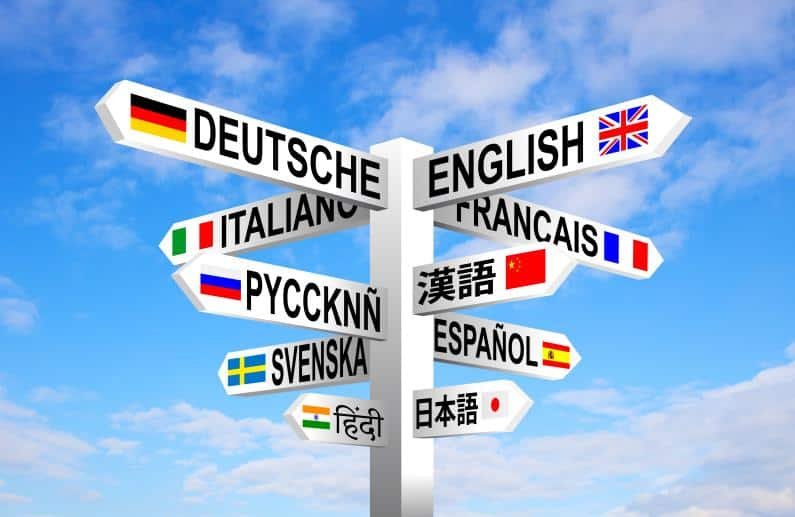In our increasingly globalised world, and thanks largely to the internet, expanding into international markets is a reality for many businesses.
Most companies are well aware of the importance of having an active online presence, but this digital content is of no use to potential international customers if they can’t understand it. Hence the importance of a multilingual website.
Having your website translated by a professional translation service will make your products or services accessible to new clients, and allow them to feel connected to your brand. But why are multilingual websites so important, and what factors need to be considered when translating them? Let’s take a look.
Translate your website for strong customer relations
Studies show that 55% of customers prefer to shop in their own language, and who can blame them?
Navigating the web through your native language is not only a much more relaxing user experience that eliminates the chances of misunderstandings, but it also makes you feel like the company is speaking to you, that their products or services are for you.
These days many web browsers offer instant machine translation of websites and, while this function can be useful in a pinch, the quality is extremely low which leaves users feeling frustrated and confused. Customers can’t be blamed for questioning why they should give money to a company that has made no effort to make their digital content accessible.
Is this the impression you want your business to give? Hiring a professional translation service to translate your website will open your business up to a whole new world of potential clients.
Your multilingual website should be easy to find
As well as helping you create strong relationships with prospective clients, translating your website into relevant languages actually increases your search engine rankings, making it easier for your company to be found online.
This is because having your content available in multiple languages means it appears in keyword searches in those languages, not only English, giving your business better exposure.
While we’re on the topic of SEO and search engines, it’s worth acknowledging that around the world different search engines are used.
In Russia people use Yandex, in China it’s all about Baidu, and in South Korea, Naver far outperforms both Google and Yahoo.
It pays to research how people use the internet in the country your business wants to expand into to give your website the best chance of being found by potential customers.
Make switching between languages easy
It’s all well and good making your website available in multiple languages, but if people can’t find the language switcher, they will be stuck viewing the site in English regardless!
It should be an intuitive process so that users don’t have to waste time and get bored. Most websites opt to place the language switcher at the top right-hand side of the page, so this is usually the best option.
Once you’ve settled on the position of the language switcher, you have to decide if you’re going to use flags or words to indicate the languages (or both, though this can look overcrowded).
Flags have the advantage of being visually appealing and simple, but can be rather exclusive; think about all the countries that speak Spanish, for example, they won’t feel represented by a Spanish flag.
If you decide to use words, we recommend having the language written in the relevant languages, i.e. the button should read ‘Deutsch’ instead of ‘German’ to make it easier for users to find.
Localisation can be just as important as translation
Translating the verbal content of your website is only part of what goes into creating a successful multilingual website; you should work with a translation agency that can also localise your site.
Localisation is the process of altering content, whether that’s a website, a video, or a brand’s advertising campaign, to make sure it is received in the appropriate manner by the target audience, taking culture into account.
When it comes to localising websites, things to consider include images, date and address formats, and brand slogans, to name a few.
How to help the translation process go smoothly
Allowing your translator access to links to the original website they are translating will make life much easier and ultimately result in better translations.
Translation does not exist in a vacuum and knowing if the text they are working on is an image caption, a CTA (call to action), or button will inform how a translator renders it. Similarly, communicate with your translation agency about the best format for the source and target texts.
This will help both your translator and webmaster, who is not likely to understand the target text.
Now that we’ve convinced you of the importance of having a multilingual website, perhaps you’d like more information about BeTranslated’s talented website translators? For more information or a free, no-obligation quote, get in touch today.






